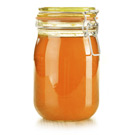Summary: This webpage offers residents options and information to help reduce exposure to toxic chemicals from plastic.
From the toothbrush we begin our day with to the light switch we turn off at night, dozens of everyday products are made from plastic.
Most plastics are made from petroleum, a nonrenewable resource. They can pollute the environment and leach out synthetic chemicals that impact human health. A large amount of plastic waste ends up in the world’s oceans. Plastics can also leach out synthetic chemicals that impact marine organisms. We can protect the health of our environment by reducing the use of plastic materials and recycling them at the end of life.
TIP #3: Should I be concerned about storing my food in plastic?
Tips for Healthy Homes
Types of Plastics
If you must use plastics, it is best to avoid plastics 3, 6 and 7 to minimize environmental and health impacts.
Plastics products can be easily identified based on the number assigned to them inside the “chasing arrows” symbol. For instance, popular disposable water bottles are often made of polyethyelene terephthalate ethylene (PETE) and are assigned the number 1. Here are common types of plastic:
- Plastic 1-PETE (Polyethylene terephthalate ethylene): Used for packaging food and beverages. No known health impacts from use.
- Plastic 2-HDPE (High Density Polyethylene): Used for packaging milk, detergents and in making some plastic bags. No known health impacts from use.
- Plastic 3-PVC or V (Polyvinyl chloride): Used in clear food packaging, cling wrap, shower curtains, building materials, flooring and children’s products. Releases many harmful chemicals during production (like dioxins) that can cause learning and behavioral problems in children, suppress immune function and cause hormone disruption. PVC is the least recyclable plastic.
- Plastic 4-LDPE (Low Density Polyethylene): Used to make plastic wraps and bags. No known health impacts from use.
- Plastic 5-PP (Polypropylene): Used to make plastic containers, yogurt containers and straws. No known health impacts from use.
- Plastic 6-PS (Polystyrene): Used to make "to-go" containers, egg cartons, CD cases and other hard packaging. Styrene can leach from polystyrene and over the long term, can act as a neurotoxin. Studies on animals report harmful effects of styrene on red-blood cells, the liver, kidney, and stomach organs.
- Plastic 7-PC or Plastic 7-OTHER (Polycarbonate): This is a category for plastics that do not fit into categories #1-6. It includes polycarbonate, bio-based plastics, co-polyester, acrylic, polyamide and plastic mixtures like styrene-acrylonitrile resin. While Plastic 7 marked OTHER does not contain BPA, Plastic 7-PC can leach harmful bisphenol A (BPA).
Additional Resources
Smart Plastics Guide - summary of seven types of commonly used plastics, product examples, recyclability, and potential health risks, PBS/National Geographic (PDF)
How To Reduce Plastic - Ecology Center (PDF)
Smart Plastics Guide, Healthier Food Uses of Plastics - Institute for Agriculture and Trade Policy (PDF)

